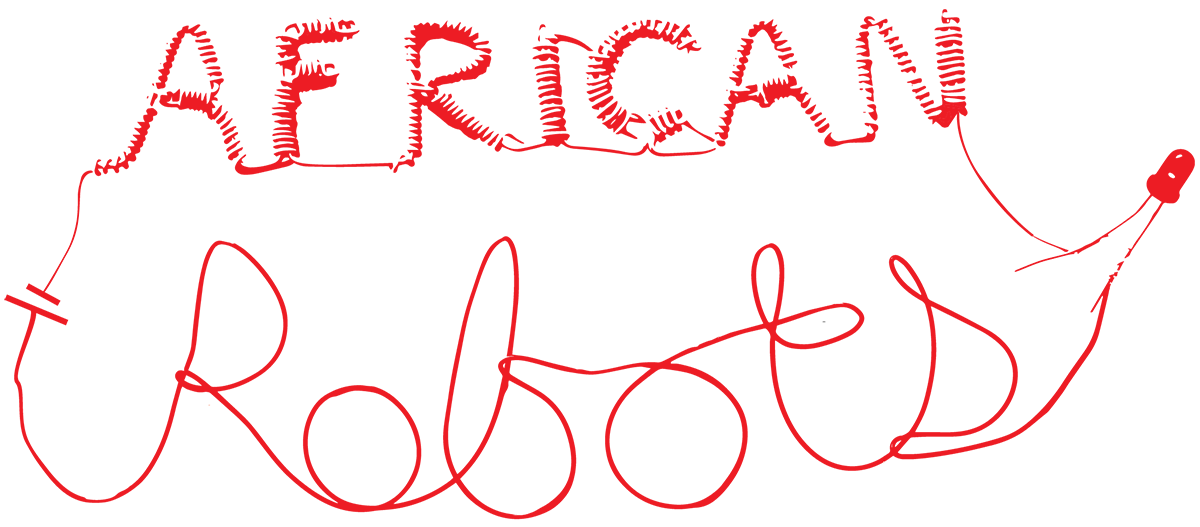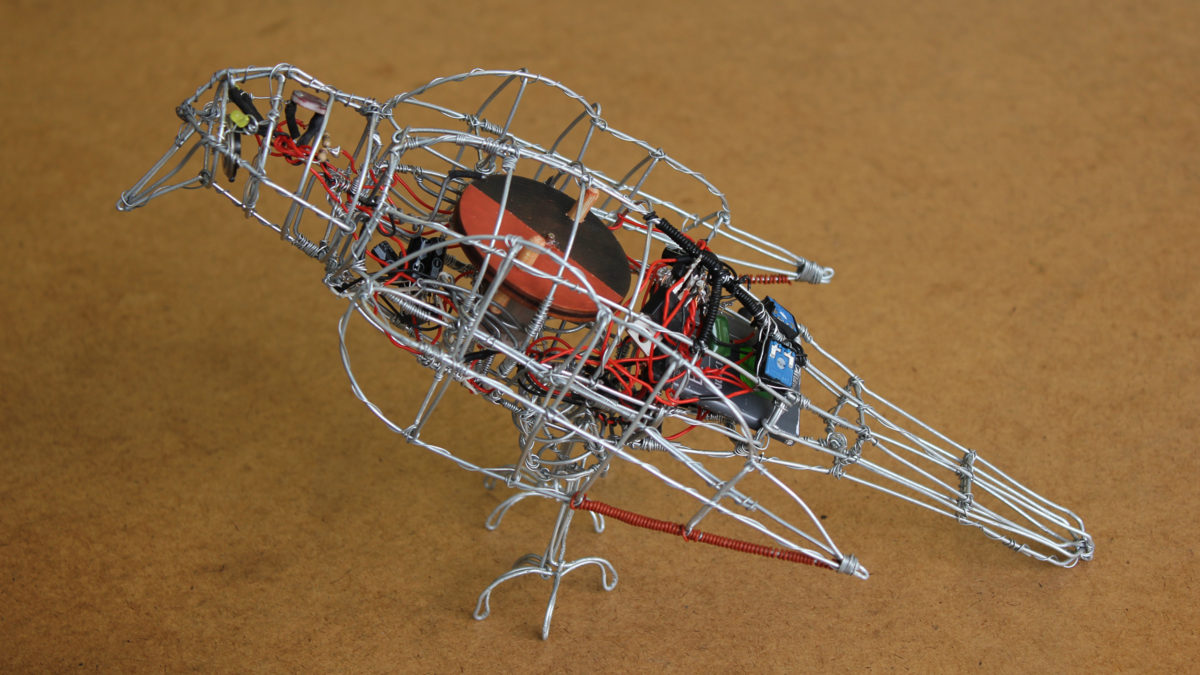Starling 1.0
Our very first African Robot! In 2013 we made Starling 1.0, depicting a nimble local bird, the Red-Winged Starling, in wire art, with innards composed of Nokia cellphone parts and other cheap electronic components, moving wings, glowing eyes, and a light-responsive call. Wire artists share the same urban spaces as informal cellphone repair stalls and shops. We thought: what if these networks could be connected to create simple street-level automatons from wire, waste materials and cellphone parts?
Starling 1.0 was designed in Ralph Borland’s studio with the assistance of a young intern from the Design Interaction programme at Royal College of Art, London, Henrik Nieratschker. We downloaded and modified a simple 3D model of a bird, and printed out profiles to guide its construction in wire by wire artist (and ragga MC) Dube Chipangura who we met selling his wares at a traffic intersection in the suburbs.
We bought an old Nokia cellphone advertised online, and scavenged cheap cellphone shops for parts such as small speakers. We bought cheap electronic components – one of the premises of our project is that basic electronic chips (ICs or integrated circuits) can be as cheap as wire – and built circuits for making sound and controlling motors, based on diagrams shared online. We soldered components directly together to self-consciously create a ‘street level’ feel – we wanted this robot to appear almost as if it could have assembled itself from available materials on the street.
And of course, Starling 1.0 led to many more African Robots…



